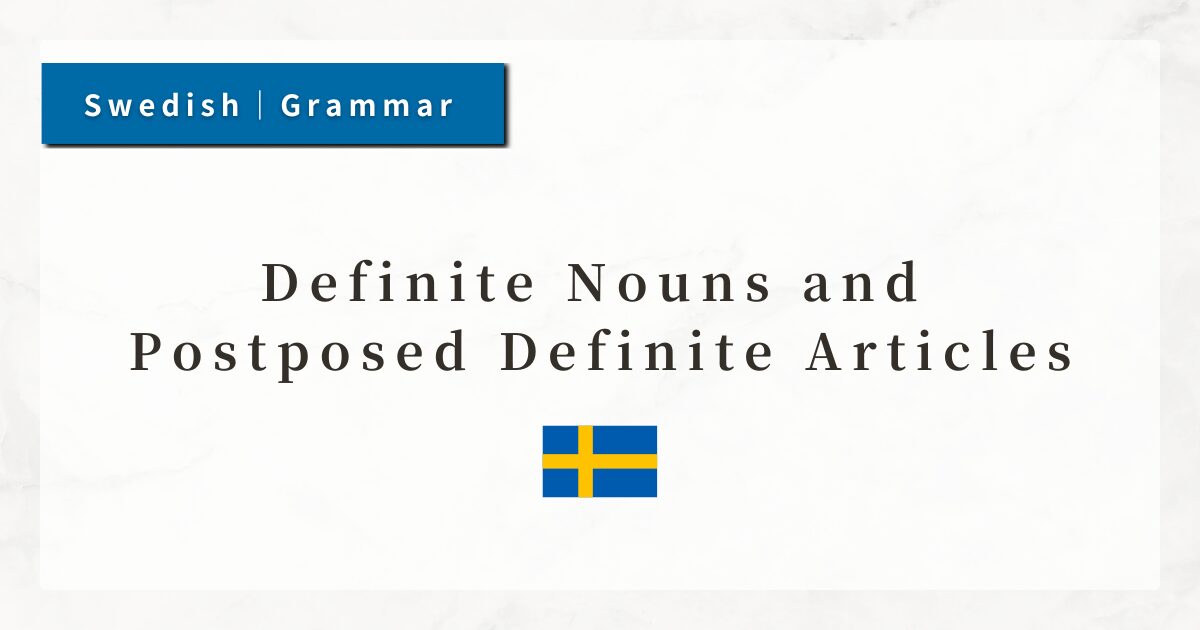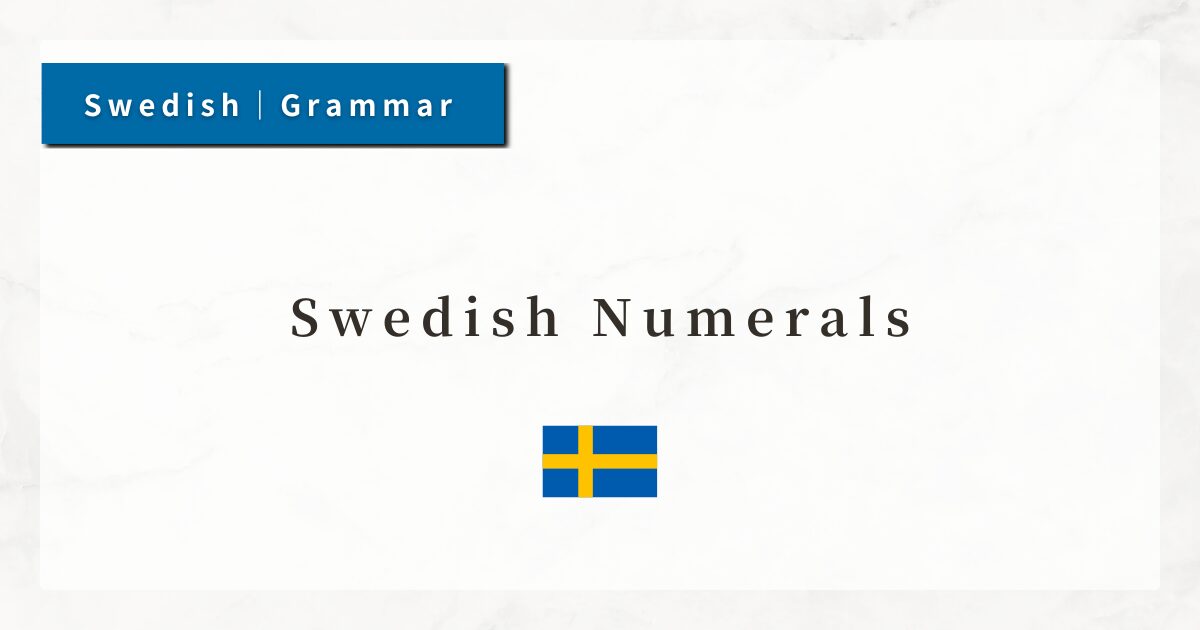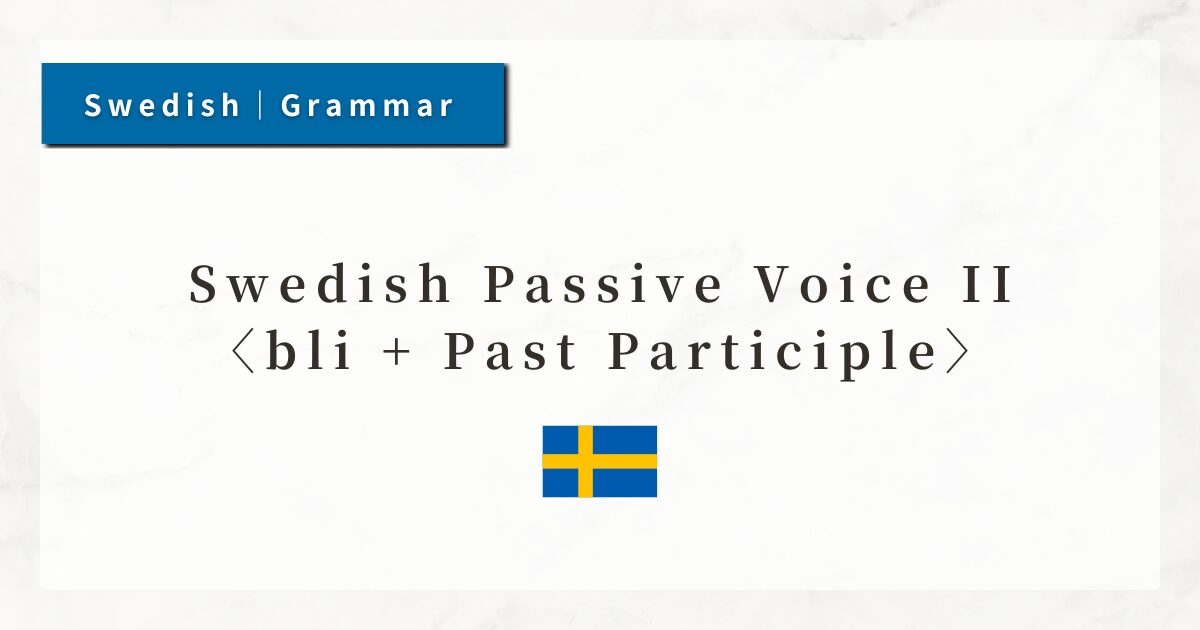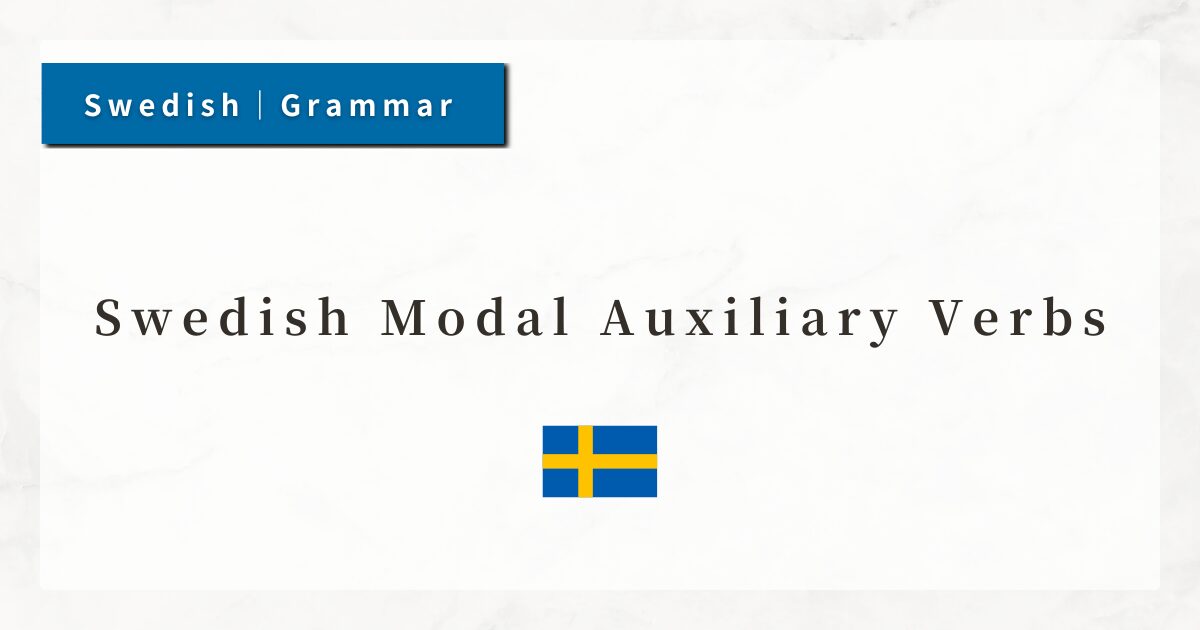#6 Definite Nouns and Postposed Definite Articles|Usage and Examples

In Swedish, the use of the definite article—the equivalent of “the” in English—follows a distinctive rule.
Instead of placing the article before the noun, as in English, Swedish often uses a postposed definite article, which is attached to the end of the noun when both the speaker and listener can identify the referent.
By adding a specific suffix to the noun, Swedish expresses a definite form meaning “the …”. In this lesson, I explain the forms, usage, and key points of the Swedish postposed definite article.
1. What Is the Postposed Definite Article?
One of the key features of Swedish is that the definite form—used for items that are already known or specific—is formed by attaching a definite article to the end of the noun.
For example, when expressing “the book” or “the car”:
- en bok (a book) → boken (the book)
- en bil (a car) → bilen (the car)
By adding suffixes such as -en or -et to the noun, Swedish creates the definite form equivalent to “the …” in English.
This article, placed after the noun, is called the postposed definite article. It is used when a noun refers to something already known or specific to both the speaker and listener.
- Jag köper en bok.
(I am buying a book.)
→ Indefinite; any book - Jag köper boken.
(I am buying the book.)
→ Definite; the book both know
The form of the suffix changes depending on whether the noun is common or neuter, and whether it is singular or plural. The basic structure, however, is noun + suffix.
2. Noun Gender and Postposed Definite Forms
Swedish nouns fall into two main genders:
- Common gender
→ en bok (book), en hund (dog) - Neuter gender
→ ett hus (house), ett brev (letter)
The suffix for the postposed definite article changes according to the noun’s gender:
- Common gender: noun + -en
(en bok → bok + en → boken) - Neuter gender: noun + -et
(ett hus → hus + et → huset)
The key point is that the indefinite article moves to the end and becomes part of the noun: en bok → boken removes en from the front and adds -en to the end.
3. When the Noun Ends with a Vowel
If the noun ends in a consonant, simply add -en (common) or -et (neuter).
If the noun ends in a vowel, you generally add only -n (common) or -t (neuter) after the final vowel.
| Indefinite noun | Meaning | Definite form | Note |
|---|---|---|---|
| en flicka | girl | flickan | Ends in -a → add -n only |
| en pojke | boy | pojken | Ends in -e → add -n only |
| ett äpple | apple | äpplet | Ends in -e → add -t |
| ett öre | öre (currency) | öret | Ends in -e → add -t |
Swedish prioritizes forms that sound natural. For example, flicka does not become flickaen but flickan for smoother pronunciation. This is a phonetic adjustment that becomes intuitive with practice.
4. Plural Definite Forms
To make a plural noun definite, first form the plural, then add the definite suffix (-na, -en, etc.).
| Plural ending | Definite ending | Definite plural example |
|---|---|---|
| -or (en-words) | -na | flickor → flickorna |
| -ar (en-words) | -na | bilar → bilarna |
| -er (en-words) | -na | böcker → böckerna |
| -n (ett-words) | -a | äpplen → äpplena |
| No change (ett-words) | -en | hus → husen / brev → breven |
This process has two steps:
- Change from singular to plural.
- Add the definite suffix.
5. Summary
- The definite suffix (-en / -et / -na, etc.) depends on the noun’s gender, ending, and number (singular/plural).
- Common gender nouns usually take -en, but nouns ending in -a take -n.
- Neuter nouns usually take -et, but those ending in a vowel take -t.
- Plural definite forms use endings such as -na, -en, or -a, depending on the plural form of the noun.




